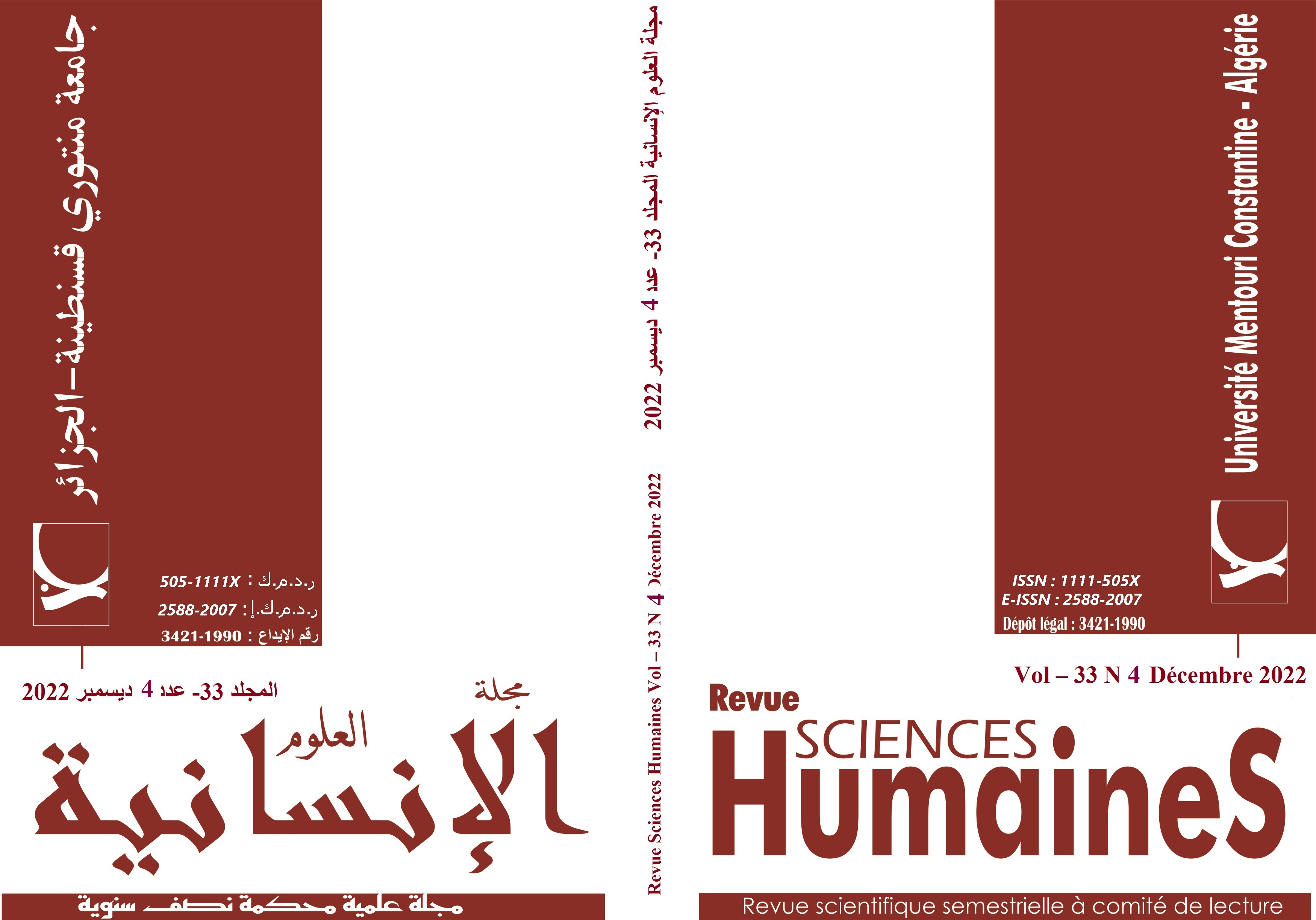Integrated-Skills and Segregated-skills approaches in the teaching of Speaking for EFL Learners
Keywords:
Integrated-skill approach, Segregated-skill approach, Speaking skill, Macro and micro skills, Oral ExpressionAbstract
The current study aims at exploring whether teachers follow the integrated-skills or the segregated-skills approach in the process of teaching the speaking skill in Oral Expression module. It also attempts to examine the learning/teaching process of the speaking skill and its integration with the other macro and micro skills. The study takes the case of first year students, at the Department of Arts and the English Language, Frères Mentouri Constantine 1 University. To achieve this aim, two questionnaires are adopted. The first is administered to one hundred twenty (120) first-year students, and a second one is assigned to twenty-one (21) teachers of Oral Expression. The obtained data confirmed that the macro and micro skills were combined to speaking with varying degrees, but they were arbitrarily integrated; that is why the integrated approach was not properly applied.
Downloads
References
. Aneela, A. & Ameela, A. (2010). Integration of language learning skills in second language acquisition. International Journal of Arts and Sciences, 3(14), 231-240.
. Aydoğan, H. & Akbarov, A. (2014). The four basic language skills, whole language and integrated skill approach in Mainstream University Classrooms in Turkey. Mediterranean Journal of Social Sciences, 5(9), 672-680.
. Beatris, M.N (2014). Integrated approach in teaching English language: The Practice in Kenya. International Journal of Education and Research, 2(4), 253-264.
. Brooks-Harper, G. and Shelton, P. W. (2003). Revisiting whole language development: A Transactional Approach to learning. Research for Educational Reform, 81, 35-42.
. Brown, H.D. (2000). Principles of language learning and teaching (4th Ed.). Englewood Cliffs NJ: Prentice-Hall.
. Goodman, K. (1986). What’s whole in whole language. Portsmouth, NH: Heinemann.
. Edelsky, C., Altwerger, B., and Flores, B. (1991). What’s whole language: What’s the difference. Portsmouth, NH: Heinemann.
. Finocchiaro, M. & Bonomo, M. (1973). The foreign language learner. New York: Regents Publishing Comp Inc.
. Harste, J., Woodward, V. and Burke, C. (1984). Language stories and literacy lessons. Portmouth, NH: Heinemann
. Hymes, D. (1972). On communicative competence. In J. Pride & J. Holmes (Eds.), Sociolinguistics (pp. 269–93). Harmondsworth, England: Penguin Books.
. Larsen-Freeman, D. (2000) Techniques and principles in language teaching. 2nd ed. Oxford: Oxford University.
. Moghadam, J. N. and Reza Adel, S. M. (2011). The importance of whole language approach in teaching English to intermediate Iranian EFL learners. Theory and Practice in Language Studies, 1(11), 1643-1654.
. Mohan, B. (1986). Language and content. Reading, MA: Addison-Wesley.
. Oxford, R., Lavine, R., crookall, D. (1989). Language learning strategies, the Communicative Approach, and their class implications, Foreign Language Annals, 22 (1) pp. 29-39
. Oxford, R., L. (1990). Language Learning Strategies: What Every Teacher Should Know. Bastion: Heinle & Heinle.
. Oxford, R.L. (2001). Integrated skills in the ESL/EFL classroom. ESL Magazine, 16(1), 111-136.
. Peregoy, S. F. (1983). Communicative competence: theory and classroom practice. Massachussetts: Addision Wesley Langman.
. Peregoy, S. F. & Boyle, O.F. (2001). Reading, writing, and learning in ESL. New York: Addision Wesley Langman.
. Richards, J. C. (2003). Current trends in teaching listening and speaking. The Language Teacher, 27(7), 3-6
. Savignon (1991). Communicative learning teaching: state of the art. TESOL Quarterly, 25, 261-277.
. Weaver, C. (1990). Understanding whole language: from principles to practice. Portsmouth, NH: Heinmann.
.Schwarzer, D. (2001). Whole language in a foreign language class: From theory to practice. Foreign Language Annals, 34, 52-59.
.Widiati, U., & Cahyono, B. Y. (2006). The teaching of EFL speaking in the Indonesian context: the state of the art. Bahasa dan seni, 34(2), 269-292.
.Yang,Y.I.J (2014). Is speaking fluency strand necessary for the college students to develop in the EFL class? Theory and Practice in Language Studies, 4, (2), 225-231
. Zhang, Y. (2009). Reading to speak: integrating oral communication skills. English Teaching Forum, 47, 32-34.
Downloads
Published
How to Cite
Issue
Section
License
Copyright (c) 2023 Human Sciences Journal

This work is licensed under a Creative Commons Attribution-NonCommercial-NoDerivatives 4.0 International License.
















